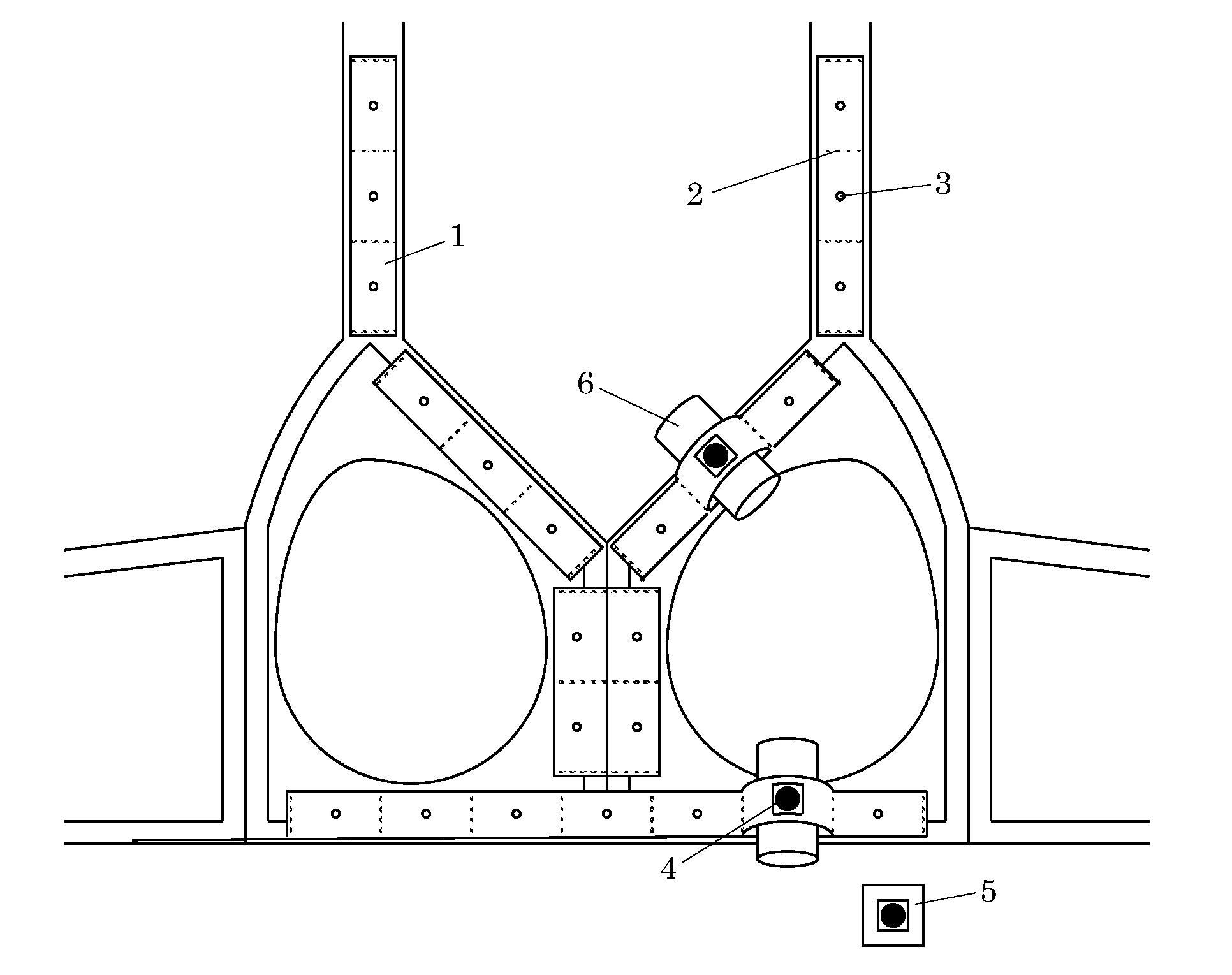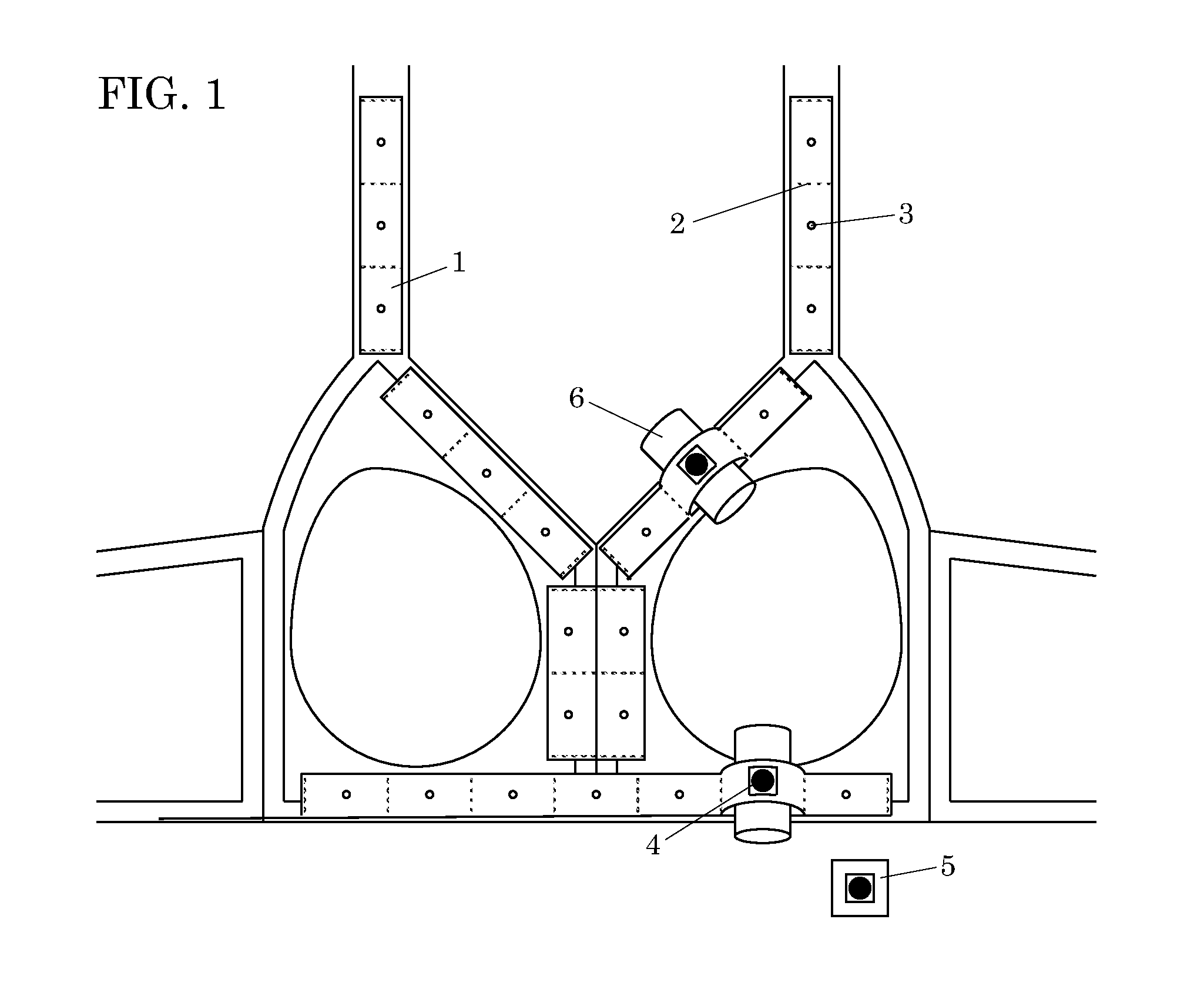Electrocardiogram monitoring devices
a monitoring device and electrocardiogram technology, applied in the field of electrocardiogram monitoring devices, can solve the problems of prolonged monitoring period, inability to tolerate skin abrasion, minutes, hours, etc., and achieve the effect of improving the quality of life and reducing the risk of cardiac arres
- Summary
- Abstract
- Description
- Claims
- Application Information
AI Technical Summary
Benefits of technology
Problems solved by technology
Method used
Image
Examples
example 1
[0054]An embodiment was constructed using a soft piece of textile material fashioned into approximately 2-inch wide strips. The length of the first strip was adequate to encompass the chest of a female patient below the breasts. Velcro was attached to the ends to make the first strip to make it adjustable in size. Second and third strips were attached to the first strip to form loops at a 90 degree angle to the first strip, each loop positioned over one shoulder of the patient. A fourth strip went across the front from one shoulder strip to the other and just above the breasts, running parallel to the first strip. Apertures were placed in strategic locations for insertion of electrodes. Adhesive-free ECG patches were placed between two pieces of material. The device was then tested and it was found that the telemetry was poor and unsatisfactory, rendering the device unsuitable for use.
example 2
[0055]A second embodiment was constructed with the aim of decreasing skin slippage and artifactual readings observed in the first embodiment (Example 1). An aperture corresponding to the shape and size of a standard ECG patch was cut out from a piece of material. A hole in the center of the material was cut out for the purpose of accommodating conductive gel. Standard ECG patches, including electrodes, were placed in various locations between a woman's brassiere and the subject's skin and held stationary by tightening the straps of the brassiere. Patch placement locations were under each shoulder strap on the front (chest / shoulder region); three patches across the region underneath the breasts on the chest; and one patch between the breasts on the chest. Telemetry tests resulted in moderate success with data collection; however, any subject movement resulted in substantial artifact, and in some cases subject movement resulted in disruption of the contact between the conductive gel / e...
example 3
[0057]A third embodiment is shown in FIG. 1. This apparatus is in the shape of a women's brassiere; alternative embodiments can be shaped and sized for men, women or children. Material (Veltex® brand fabric) was cut into 1 in.-wide strips. Each strip was sewn down in strategic locations at 2-inch intervals with a 3 / 16-inch hole in the middle of each two-inch interval. The strips were sewn in the front of the brassiere, down along each strap, crossing between each breast, and below each breast. The crossing of the strips gave stability to the apparatus and better conductivity with the electrode gel and the skin.
[0058]Specifically, referring to FIG. 1, strips of fabric (1) capable of unidirectional expansion (Veltex® brand fabric) were affixed to a garment (Playtex® 18-hour brassiere) by stitches (2) sewn at regular intervals, the stitches being perpendicular to the long axis of the fabric strips, thereby creating loops of Veltex fabric. Circular apertures (3) were present within each...
PUM
 Login to View More
Login to View More Abstract
Description
Claims
Application Information
 Login to View More
Login to View More - R&D
- Intellectual Property
- Life Sciences
- Materials
- Tech Scout
- Unparalleled Data Quality
- Higher Quality Content
- 60% Fewer Hallucinations
Browse by: Latest US Patents, China's latest patents, Technical Efficacy Thesaurus, Application Domain, Technology Topic, Popular Technical Reports.
© 2025 PatSnap. All rights reserved.Legal|Privacy policy|Modern Slavery Act Transparency Statement|Sitemap|About US| Contact US: help@patsnap.com


